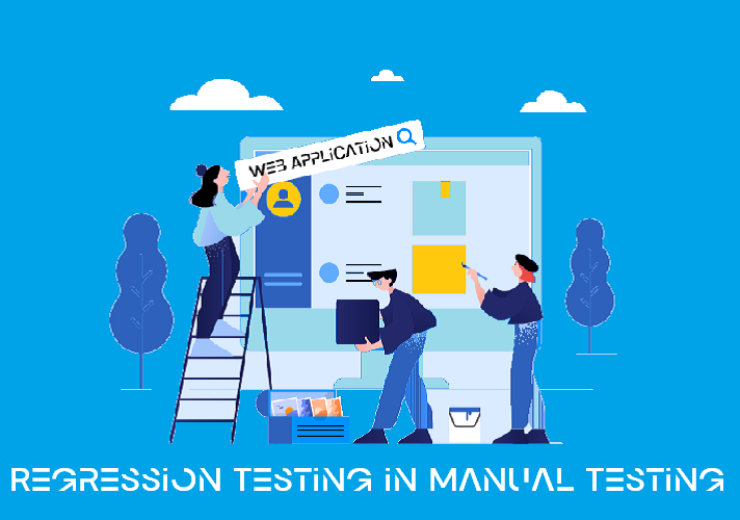Ultimate Guide to Salesforce Automation Testing: Strategies and Tools

Introduction
Salesforce Automation Testing involves using specialized software tools to test multiple Salesforce applications automatically. Automation tests simulate user actions, such as clicking buttons and entering data, to identify bugs and ensure smooth operation. With the use of automated controls, the tool speeds up the testing process and enhances the reliability of Salesforce applications, ultimately improving user satisfaction and reducing maintenance costs.
Automation testing in Salesforce is crucial for ensuring that Salesforce applications work smoothly and meet user expectations. In this article, we discover the scope of automation testing in Salesforce and how its strategies can be implemented for companies. In this article, you will also find a brief description of the tools used for Salesforce Automation Testing that your team can adapt to.
Understanding Salesforce Automation Testing
————————————
The use of automation is done everywhere on Salesforce, and automation testing also has a wide scope on Salesforce. An automation testing company workforce can utilize the Salesforce suite to conduct functional testing, user-centric tests, regression testing, and other software capability testing needed before deployment.
The use of automation testing across different apps and capabilities of Salesforce also ensures that the company can test out different features rapidly and create customized features to be integrated into the Salesforce Cloud. The Salesforce Cloud can be customized and tested thoroughly for its features and capabilities. The automation testing process can ensure that the app that is integrated is reliable and upscaled as per requirements.
There are many reasons why testing teams are shifting to automation testing on Salesforce. For example, the use of automation and thorough facilitated testing can be highly time efficient. Where the demand for Salesforce Integration is very high, automation for tests expedites the process while maintaining the accuracy of all test cases.
Moreover, these automated tests can be streamlined and customized according to the features and app types. The use of automation in testing can also reduce the costs incurred during testing so that the company saves costs while making more profits. These are the primary benefits of using automated tools for Salesforce testing.
While automation testing has made a lot of progress in the Salesforce sector, there are some challenges that are slowly heading towards resolution. For example, the complex nature of the Salesforce environment is something that might be difficult to navigate even with automated tools. Tools and test cases need to be as advanced as the Salesforce environment and its demands.
The dynamic UI elements of Salesforce suite also pose a challenge as testers will find it difficult to locate them and test them properly. However, the use of certain tools meant for dynamic testing can resolve this issue. Moreover, the challenge of data management related to the testing process is also present when using automated tools.
Preparing for Salesforce Automation Testing
————————————
● Setting clear testing objectives
The best way to start the preparation stage for Salesforce Automation testing is to set clear testing objectives. When you are starting to test out certain features or handing them over to a third-party agency to get them tested, it is important to outline the testing objectives and clarify the goals to be achieved. This can lay out the project brief properly and help your team create accurate automated test cases.
● Understanding your Salesforce architecture
- Customizations – It is important to know what part of the Salesforce suite you are working with to test it out properly. The testing process is carried out in phases, including both customization and integration. During the customization process, the different features and intricacies of the customized developments are tested so that the features are ready to be integrated. Testing the customized features is important as the new features have to connect with the main suite seamlessly.
- Integrations – The integration of new features and processes should also be tested to ensure that all the parts of the suite are working properly. Integration tests have to run completely on the Salesforce suite so that the company can ensure complete integration into the workflow. Integration testing is done at different stages to ensure that all the features work together to make one complete suite to achieve multiple tasks.
● Identifying test scenarios
- Functional testing – Functional testing is the most basic tests that need to be conducted on the features of Salesforce. The team has to check on the different system functions of the software. The functional tests are conducted to ensure that all the features and capabilities are functioning properly to achieve the goals of the software. During the functional testing process, different functions are tested on the basis of different conditions to check their usage variation.
- Regression testing – Once the customized features are integrated into the Salesforce suite and the features are introduced, the changes and new additions are put through regression tests. Regression tests ensure that the existing features and navigations of the application are working along with the new ones. Automated test scripts are run on the existing and new workflows of the Salesforce suite to ensure that all the parts of the Salesforce Cloud suite are working properly.
- Performance testing – Testing Salesforce’s performance during its implementation, customization, and integration is important. Companies demand high-performance apps today, and Salesforce features need to have consistent performance to create a flow that is useful for the company.
The performance of the Salesforce suite is checked under different conditions and loads so that its speed, user interaction level, and responses are tracked. Performance testing is done from time to time to make sure that the suite is working as expected. Stress testing and endurance testing is done under the automated performance tests.
- Security testing – The security provisions and layers are also checked and tested through security testing protocols around Salesforce. The security testing team has to test the different layers of security and data privacy to identify vulnerabilities and avoid cyber threats that could attack the Salesforce Suite. As cyber threats continue to evolve, it is highly necessary to conduct security tests regularly.
Strategies for Effective Salesforce Automation Testing
————————————
● Test Planning and Management
- Defining test cases and scripts – The initial step of test planning is to define the goals of the test and create test cases and scripts accordingly. The test cases should be scripted in a customized manner to test out the specific features of the Salesforce suite.
- Managing test data – Data management for the tests is crucial as the stored data can be analyzed to understand the vulnerabilities and improvement areas of the Salesforce environment. The data collected is sensitive and should be stored in a secured database so that only authorized professionals can access it and use it judiciously.
- Organizing test suites – The test suites also need to be organized according to the various provisions and demands of the testing process so that the tests are run in a streamlined and scheduled manner. Different features of the Salesforce suite need to be tested, and this testing process can be extensive. However, complete organization of the test suites can maintain the flow and give optimal and accurate results.
● Continuous Integration (CI) and Continuous Deployment (CD) Practices
- Implementing CI/CD in Salesforce testing – The implementation of the CI/CD pipeline in Salesforce testing can ensure that the testing and integration process goes on smoothly and in a streamlined manner. The use of version control systems, automated build processes, and environment management tools can create a continuous integration and deployment process.
- Benefits of CI/CD for testing efficiency – There are many benefits of integrating the CI/CD pipeline into the Salesforce testing process. For example, the CI/CD pipeline makes it easy to track the errors and resolve them as soon as possible. The pipeline also enhances the functions and efficiency of the test cases and suites as a whole. In totality, the CI/CD pipeline expedites the testing process so that the time to market the application is lowered.
● Adopting a Modular Testing Approach
- Building reusable test cases – To reduce the hassle and issues linked with Salesforce testing, the team needs to create reusable test cases that are adaptable and can be utilized again with minor adjustments. Reusable test cases make the test process simple and reduce the workload for the testing team.
- Leveraging modular test scripts for scalability – The testing team should also use automation test environments to create scalable test scripts that are modular and can be modified with time and need. The test environment should be flexible and scalable so that it can be used for future tests and improvements.
Tools for Salesforce Automation Testing
————————————
● Overview of Popular Salesforce Automation Testing Tools
- Selenium – Selenium is a popular and full-fledged website and application testing tool that can be used for multiple purposes. The Selenium suite of testing tools can work on multiple browsers and platforms easily. The different components of this tool are Selenium IDE, Selenium Grid, etc. This is a flexible and highly developed tool that can be used for multiple testing cases and processes like Salesforce Testing and improvement.
- Provar – The Provar tool is a completely automated testing tool that can be used to test out the features of Salesforce. The tool can be used to conduct specific tests before Salesforce integration, such as workflow testing, customized features testing, etc. The Provar tool is highly useful and user-centric as it has a drag-and-drop feature that allows easy and rapid test case creation for different purposes. The tool is also great for cross-functional testing across different features of the test environments.
- AccelQ – There is a new tool used for test case automation called AccelQ that can be used in the cloud environment. The AccelQ tool can be used to create design and automate tests for Salesforce features and workflows without adding more data cache to your Salesforce system. The AccelQ tool can be used to set business processes and verify the outcomes of these processes before complete implementation. The tool is versatile as it allows cross-platform and cross-browser testing of Salesforce features.
- io – Testim.io tool is an automated testing tool that can be used to take a codeless and streamlined approach to Salesforce testing. The tool is very advanced, and it uses ML algorithms to create intelligent test cases and maintain them for good results. The tool is a great tool to use as it facilitates cross-platform and cross-browser testing for Salesforce features and workflows. The Testim.io tool also fosters parallel execution of tests so that the process is complete at a rapid rate.
- Salesforce Test Automation Framework – The Salesforce Test Automation Framework is a highly versatile and conserved framework that can be used to test all the features and workflows of the Salesforce suite automatically so that the features can be integrated quickly into the suite.
● Comparison of Tools
- Features – There are some features and capabilities of the automation testing tools that are highly desirable. The features and capabilities that should be in the testing framework include AI and ML capabilities so that the test automation goes on smoothly and rapidly.
The Salesforce automation testing tool that your company should choose should be versatile and offer cross-platform testing abilities. The features of the automation tool should be integrated so that the test cases are easily run, and the test results should be saved in a secured database.
- Pros and Cons – The pros of automation testing tools across the board are that they are highly efficient and fast. A lot of these testing tools are specific to Salesforce testing and get the job done quickly. With the help of these tools, the testing team can also improve their Salesforce positioning and productivity.
The automation of test cases can help expedite the process so that the team can easily move towards improvements and customization of features. However, there are also a lot of cons attached to the automation testing tools that the developers have to move through.
These include the initial complexity that aligns with the setup of the tool and its environment. The professionals have to constantly update their skill set to properly use the automation testing framework, and sometimes, they have to invest a lot in the maintenance of the automated test scripts. All these cons make automation of tests a challenging sector.
- Recommended use cases – The use cases of automation for the streamlining of tests on Salesforce can be done for repetitive test cycles like regression testing so that time can be conserved while checking the existing functionalities. Moreover, the automation tools can also be used for usability testing to check its user compatibility across different browsers and devices. On the other hand, the tools can also be used for integration testing to check that the data is conserved and the features are streamlined into the existing workflow.
● Integrating Automation Tools with Salesforce
- Setup and configuration tip – When setting up an automation testing tool for the Salesforce suite, check that it is compatible with the software. Define your testing objectives and outline them to integrate the tool into the software. After comparing all the tools available to you, choose the best one and then follow the installation guidelines offered by the vendor to integrate it into the testing environment.
- Handling Salesforce’s dynamic elements and IDs – The dynamic environment of the Salesforce suite needs specific tools and features to be used during tests. For example, during testing, you should use CSS selectors to identify the dynamic elements and test them. You can also use Salesforce Lightning locators to spot the dynamic elements for your test case.
Implementing Salesforce Automation Testing
————————————
● Developing Test Scripts
- Writing effective and scalable test scripts – The automation testing process runs on effective test scripts and environments. The testing team needs to take into consideration the objectives of the test process and use the objectives to develop effective and efficient test scripts.
- Tips for dealing with Salesforce’s unique UI elements – The testing team needs a deep understanding of the Salesforce UI architecture and elements before testing the framework fully. To test the UI elements thoroughly, the testing team needs to use ARIA accessibility labels and roles properly to access all the UI elements and test them thoroughly.
● Execution and Monitoring
- Running tests and scheduling – In the automated testing framework, the testing team can organize the test scripts and run the tests in a scheduled manner. The team can set the schedule for testing and let the tests run on their own at the specified time.
- Monitoring test executions and analyzing results – The team can monitor the test run in an automated and easy way. Most of the testing tools have a single dashboard from where you can see the progress and also determine the pace of the test completion. The results can be easily gathered and analyzed from the click of some buttons.
● Maintenance
- Updating test cases and scripts – The test cases and scripts that you create through the automated tool also need to be updated and maintained. The team has to update and maintain the scripts according to the needs of the new features and test cases.
- Managing test data – The testing process generates some data with every testing cycle. This data needs to be saved in a secured database and then analyzed for insights on the issues faced and how to resolve them. The company can also utilize cloud capabilities to manage test data and features.
Best Practices for Salesforce Automation Testing
————————————
- Prioritizing test cases based on risk and impact – The testing team has to understand the goals of the testing cycle and prioritize the list of features that need to be tested. The team should conduct a thorough risk assessment of all the features and vulnerabilities and then organize them properly before executing the test cases and the execution of each test suite.
- Ensuring comprehensive coverage with a mix of testing types – There are multiple testing types that have to be executed by the same testing team. Your team should attach importance to all testing types and mix them to ensure that all the aspects of the application are covered and tested properly.
- Emphasizing data-driven testing – The data collected from previous testing cycles and feedback channels should be integrated into the testing framework so that the test cases can be improved. Both the team feedback and user complaints are pivotal for improvements during this process.
- Regularly reviewing and refining testing strategies – The testing strategies that the team uses can be improved with the use of automation tools. The team should conduct internal meetings and decide on refining the strategies for better outcomes in the next cycles.
- Fostering a culture of quality and collaboration – The quality and collaborative mindset of the testing team should be conserved and extended towards the development team and users. A culture of quality assurance and accurate testing can only be enhanced with the use of automation testing tools.
Case Studies and Success Stories
————————————
- Overview of successful Salesforce automation testing projects – Leading marketing and advertising companies are using Salesforce for CRM integration and streamlining their promotional initiatives. The use of automation tools and CI/CD pipeline has supported the integration process and helped the team to upscale. The same results have also been seen for fence and railing companies in the USA. With the help of Salesforce testing, they have used the suite for digital transformation of the internal workflow.
- Lessons learned and key takeaways – From these case studies, we understand that Salesforce implementation and testing can be done from different companies across industries. The automation tools are highly scalable and flexible, bringing in better results in integration so that the company can use the Salesforce suite to maximum efficiency.
Empower Your Salesforce Journey: Begin Automation Testing Today!
Salesforce suite is an extensive suite of tools and features that can strengthen and improve your company workflow. The future is already here with progress on the automation front. For the best results on testing and improvement of your Salesforce suite, you should choose from automation tools that can be customized and introduced into your existing workflow in a beneficial, productive manner.




